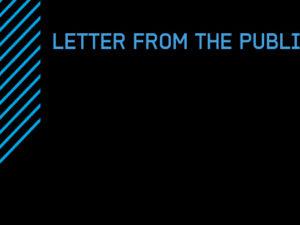
Myrna James Yoo
Publisher and
Managing Editor
Apogeo Spatial
and LBx Journal
myrna@apogeospatial.com
Google is open-sourcing Google Earth Enterprise (GEE)! It is rare for a quarterly publication to be able to publish “news,” so we are thrilled to do so. Google does very little outreach; they quietly publish news on their developer blogs, and gradually, people notice.
In our Fall 2015 issue, when we learned that Google was going to stop supporting GEE, we knew that many people would be looking for ways to ll that gap. Matteo Luccio took on the task of writing our ongoing series of articles called “Filling the Gap,” which includes in each issue first-person interviews with about three companies offering various solutions, platforms, and game-changing technologies. Since then, we have featured AGI’s Cesium, Esri’s ArcGIS Earth, Luciad, PIXIA, CartoDB, Skyline Software Systems, Galdos Systems, BAE Systems, VRICON, Mapbox, and DigitalGlobe.
In this issue, the article, we feature Earthvisionz, PYXIS Innovation, and Hexagon, all offering different options for companies and orga- nizations that will no longer use GEE. Of course, some of them will now be able to continue using GEE’s open-source version.
We regularly publish articles about the work towards attaining the U.N.’s Sustainable Development Goals. In Hans-Peter Plag’s regular column, “On the Edge,” he offers ideas on how the SDGs can be achieved, beginning here. The work of the Group on Earth Observations, and GEOSS, and all the others is so important, as the nations of the world work together to eradicate hunger and poverty, for example.
DigitalGlobe partnered with Geospatial Media to publish, “Transforming Our World: Geospatial Information Key to Achieving the 2030 Agenda for Sustainable Development” (http://bit.ly/2GeoSDGs) with knowledge partners GEO (Group on Earth Observations) and UN-GGIM (United Nations-Global Geospatial Information Management). The report shows how geospatial information is relevant to reaching almost all of the 17 goals.
Much of what our government provides and does for the citizens of this country is at risk, due to the new administration in Washington. For example, they want the U.S. to leave the U.N. This would be devastating for many reasons. So much incredible work is being done by so many highly capable people around the world, and it’s essential that the U.S. remain part of this work.
Prior to taking over this magazine in 2003, I had little knowledge of the extent to which our government contributes to society, such as with technologies like GPS, which was created by the U.S. Air Force in the mid-1990s, and is available to anyone, including businesses, to completed all kinds of products. In fact, GPS is the backbone of all location-based data and apps—including being an essential component within our Smartphones, enabling not only real-time traffic in maps, but also all the customized information that you get from your phone related to where you are. We cover this in LBx Journal; watch for LBx news in 2017.
I have always believed in freedom of the press, which now seems at risk, and also, I believe in the absolute responsibility of the press to publish the truth. These are very uncertain, even frightening times, because with the Internet, anyone can publish anything, and people often post opinions as facts, or “alternative facts,” to quote one senior administration official. There is no such thing as “alternative facts” for those of us who have integrity.
I am taking a stand as a member of the press. Granted, my company and publications are niche, and targeted, and therefore smaller in number, but we are global in reach and in perspective. I have always stood on the principle of editorial integrity. This concept includes publishing facts and truth. Yet, it goes beyond that. Editorial integrity means that we publish as objectively as humanly possible the information that our readership needs to know, beholden only to readers, not to advertisers. We provide a vehicle for sponsors’ messages, which do not affect content of the articles. That is editorial integrity.



